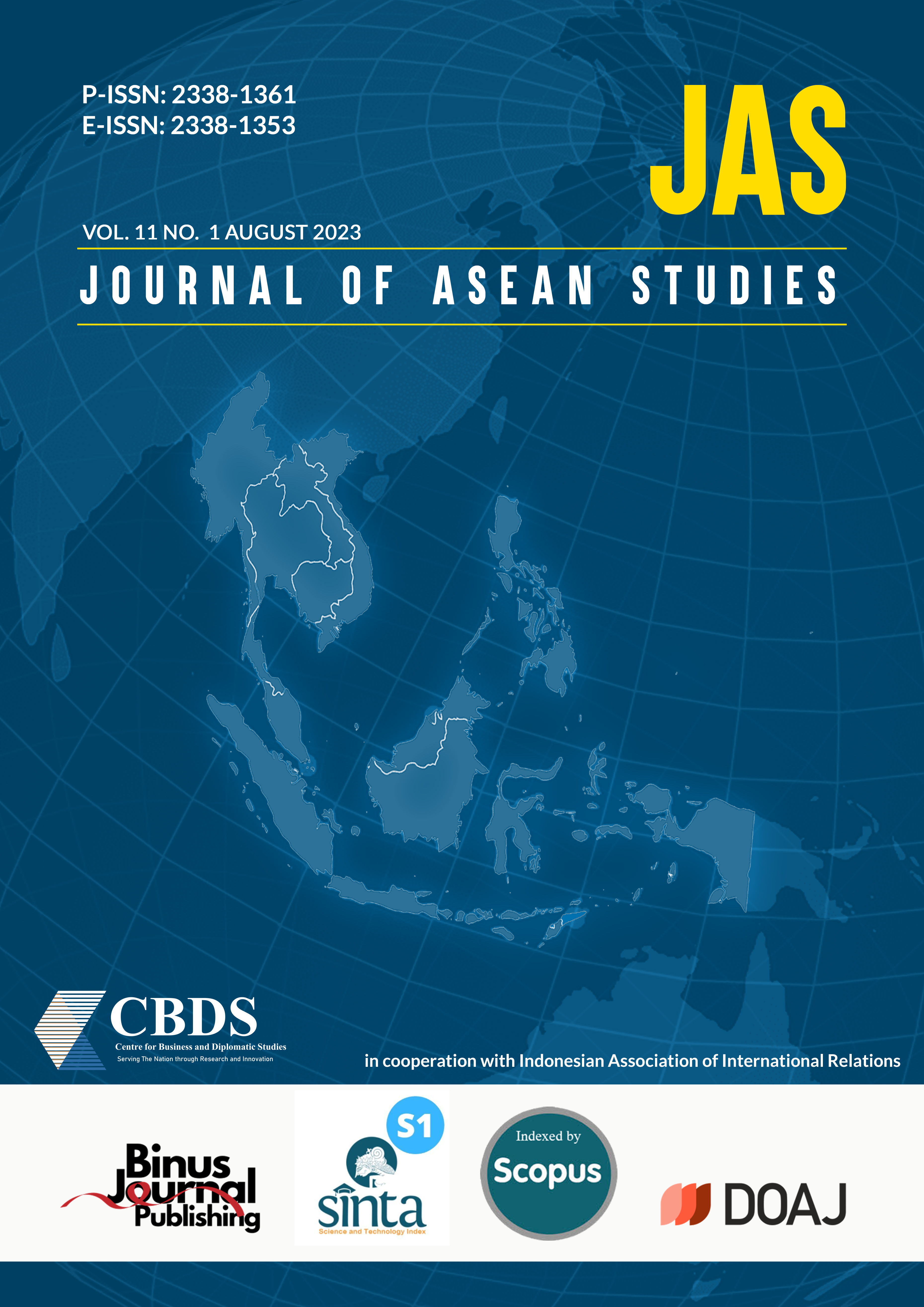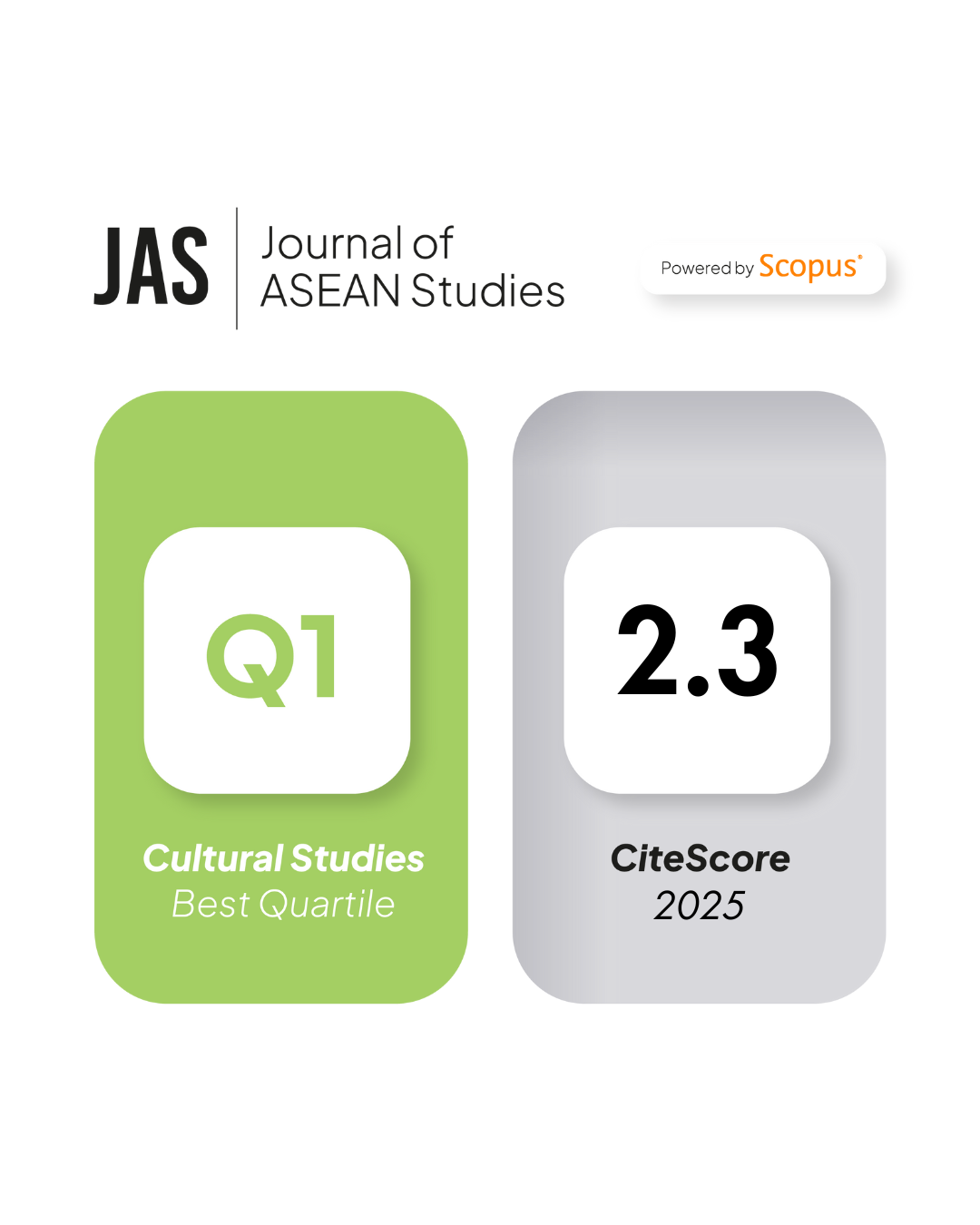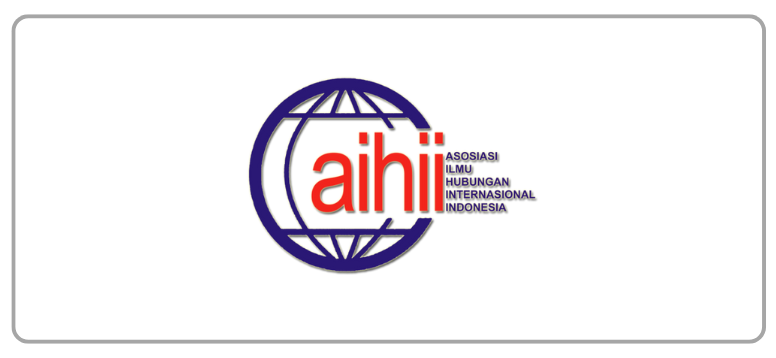Harmonizing Halal in ASEAN: Analysis of Halal Food Guidelines under the ASEAN Way Approach
DOI:
https://doi.org/10.21512/jas.v11i1.9682Keywords:
ASEAN, codex alimentarius, economic integration, halal, legal harmonizationAbstract
The research examined how ASEAN is moving towards legislative harmonization in the key economic sector of halal foods. The research investigated how ASEAN has promoted economic integration by building regional consensus regarding controversial issues, such as the definition of halal food, and discuss the role of other international instruments in building regional consensus – the “ASEAN†way. Qualitative methodology was used by integrating a historical, doctrinal, and comparative approach. The first analysis was on the process leading to adopting ASEAN halal food guidelines, which constitute the most concrete output of regional efforts to bring domestic standards closer. The following procedures were to compare and contrast these instruments substantively to identify the areas where new consensus has been found and those where disagreements persist. Finally, the research examined the potential influence of the guidelines adopted by the Codex Alimentarius Commission, the Organization of Islamic Cooperation, and MABIMS in drafting ASEAN instruments. The research concludes that despite of lengthy and difficult road to gaining consensus through the ASEAN way mechanism, member states have successfully agreed on some elements of halal standards. However, the guidelines require member states’ legislation to achieve full harmonization in addition to ASEAN soft law. Moreover, international initiatives have impacted ASEAN’s halal standards in important ways. Some issues regarding harmonization remain, such as mutual recognition and labelling, and require further investigation.
References
Abdallah, A., Rahem, M. A., & Pasqualone, A. (2021). The multiplicity of halal standards: A case study of application to slaughterhouses. Journal of Ethnic Foods, 8(1). https://doi.org/10.1186/s42779-021-00084-6
AFSN. (2003). ASEAN Food Safety Network: ASEAN Halal Food. http://‌www.afsn.net/ASEANHALAL/index.php
Aminuddin, M. F., & Purnomo, J. (2017). Redefining ASEAN way: Assessing normative foundation on inter-governmental relationship in Southeast Asia. Journal of ASEAN Studies, 5(1), 23. https://doi.org/10.21512/jas.v5i1.962
ASEAN. (1999). ASEAN General Guidelines on the Preparation and Handling of Halal Food. https://www.asean.org/wp-content/uploads/images/Community/AEC/AMAF/UpdateApr2014/ASEAN%20GENERAL%20GUIDELINES%20ON%20HALAL%20FOOD_.pdf
ASEAN. (2003a). 2003 Declaration of ASEAN Concord II. https://www.icnl.org/wp-content/uploads/Transnational_2003Declaration.pdf
ASEAN. (2003b). ASEAN 2003 Agreement on the ASEAN harmonized cosmetic regulatory scheme. https://www.asean.org/wp-content/uploads/2012/10/20707.pdf
ASEAN. (2005). ASEAN 2005 ANNUAL-REPORT-2004-2005. https://asean.org/wp-content/uploads/2021/08/ANNUAL-REPORT-2004-2005.pdf
ASEAN. (2008). The Asean charter. Association of Southeast Asian Nations. https://asean.org/wp-content/uploads/images/archive/publications/ASEAN-Charter.pdf
ASEAN. (2009). ASEAN trade in Good Agreement (ATIGA). https://asean.org/asean2020/wp-content/uploads/2020/12/ASEAN-Trade-in-Goods-Agreement.pdf
ASEAN. (2015a). ASEAN Economic Community Blueprint 2025.
ASEAN. (2015b). ASEAN MEDICAL DEVICE DIRECTIVE. https://asean.org/wp-content/uploads/2021/08/22.-September-2015-ASEAN-Medical-Device-Directive.pdf
ASEAN. (2017). ASEAN 2017 PoA-ASEAN-Halal-Cooperation-2020. https://asean.org/wp-content/uploads/2012/05/2.-PoA-ASEAN-Halal-Cooperation-2020.pdf
ASEAN. (2019). ASEAN General Guidelines on Halal Food.
ASEAN. (2020). ASEAN 2020 PoA-Halal-food-2021-2025. https://asean.org/wp-content/uploads‌/2021/12/FAFD-6.-PoA-Halal-food-2021-2025.pdf
ASEAN. (2021). ASEAN Matrix of Actual Cases as of 26 April 2021.
Asian Trade Center. (2019, June 27). Non-Tariff Barriers (NTBs) in ASEAN and their elimination from a business perspective. https://eccil.org/euro-lao-business/non-tariff-barriers-ntbs-in-asean-and-their-elimination-from-business-perspective/
Azam, S. E., Moha, &, & Abdullah, A. (2021). Halal standards globally: A comparative study of unities and diversities among the most popular halal standards globally. Halalsphere, 1(1). https://doi.org/https://doi.org/10.31436/hs.v1i1.20
Chao, E. C. (2022). Islam and veterinary science: Rethinking animal suffering through Islamic animal ethics and the evolving definition of halal slaughter. Frontiers in Veterinary Science, 9. https://doi.org/10.3389/fvets.2022.785585
Davidson, P. J. (2008). The role of International Law in the Governance of International Economic Relations in ASEAN’ (2008) 12 Singapore Year Book of International Law 213 MLA 9th ed. Davidson, Paul J. In Singapore Year Book of International Law (Vol. 12). http://www.commonlii.org/sg/journals/SGYrBkIntLaw/2004/10.pdf
Davinia, M., Aziz, A., & Dehousse, R. (2016). ASEAN Integration Through Law Plenary 2, ASEAN Governance, Management and External Legal Relations. https://cil.nus.edu.sg/‌‌‌‌wp-content/uploads/2016/08/SD_Executive-Summary-Aziz-and-Dehousse-formatted.pdf
Department of Standards Malaysia. (2009). Malaysian Standard Haal Food-Production, Preparation, Handling and Storage. https://law.resource.org/pub/my/ibr/ms.1500.2009.pdf
Desierto, D., & Cohen, D. (2020). ASEAN Law and Regional Integration: Governance and the Rule of Law in Southeast Asia’s Single Market (1st Ed.). London: Routledge. https://doi.org/https://doi.org/10.4324/9781315267401
Deuraseh, N. (2003). Is imbibing Al-Khamr (intoxicating drink) for medical purposes permissible by Islamic Law? Arab Law Quarterly, 18(4), 355–364. https://doi.org/10.1163/0268055032342749
Deuraseh, N., & Brunei Darussalam, N. (2020). Review of halal food standard PBD24: 2007 in Negara Brunei Darussalam towards quality and safety food. KnE Social Sciences, 123-140. https://doi.org/10.18502/kss.v4i9.7321
Druzin, B. H. (2017). Why does soft law have any power anyway? Asian Journal of International Law, 7(17), 361–378. http://dx.doi.org/10.1017/S2044251316000229
FAO. (1979). The 2nd Session of the Codex Coordinating Committee for Asia. https://www.fao.org/fao-who-codexalimentarius/sh-proxy/en/?lnk=1&url=https%253A%252F%252Fworkspace.fao.org%252Fsites%252Fcodex%252FMeetings%252FCX-727-02%252Fal79_15e.pdf
FAO. (1993). The 8th Session of the Codex Coordinating Committee for Asia. https://www.fao.org/input/download/report/415/al93_15e.pdf
FAO. (1997a). General Guidelines for Use of the Term “Halal†(CAC/GL 24-1997). https://www.fao.org/‌‌‌3/y2770e/y2770e08.htm
FAO. (1997b). Report of the Twenty-Fourth Session of the Codex Committee on Food Labelling. https://www.fao.org/3/W1715E/W1715E00.htm#TOC
FAO. (2004). Strategic Plan of Action on ASEAN Cooperation in Food, Agriculture and Forestry Background. https://faolex.fao.org/docs/pdf/asean197571.pdf
FAO. (2016). Understanding Codex. https://www.fao.org/3/i5667e/i5667e.pdf
FAO. (2019). Information on the Arab Food Safety Initiative for Trade Facilitation (Safe) and Results Achieved under the FAO-led Components. The 10th Session on joint FAO/WHO Food Standards Program, FAO/WHO coordinating committee for the Near East.
Fukunaga, Y. (2021). Use of legal instruments in the ASEAN economic community building. Journal of Contemporary East Asia Studies, 10(1), 65–82. https://doi.org/10.1080/24761028.2021.1905199
Guzman, A. T., & Meyer, T. L. (2010). International soft law. Journal of Legal Analysis, 2(1), 171-225. https://doi.org/10.1093/jla/2.1.171
Hsieh, P. L., & Mercurio, B. (2019). ASEAN law in the new regional economic order: An introductory roadmap to the ASEAN economic community. In P. L. Hsieh & B. Mercurio (Eds.), ASEAN Law in the New Regional Economic Order: Global Trends and Shifting Paradigms (pp. 3–21). Cambridge University Press. https://doi.org/10.1017/9781108563208.002
International Trade Centre. (2015). Trade Impact for Good: From niche to mainstream Halal Goes Global. http://www.intracen.org
JAKIM. (2011). Alkohol Dalam Makanan, Minuman, Pewangi Dan Ubat-Ubatan. http://e-smaf.islam.gov.my/e-smaf/index.php/main/mainv1/fatwa/pr/10281
Johan, E., & Schebesta, H. (2022). Religious regulation meets international trade law: Halal measures, a trade obstacle? Evidence from the SPS and TBT committees. Journal of International Economic Law, 25(1), 61–73. https://doi.org/10.1093/jiel/jgac003
Kahler, M. (2000). Legalization as Strategy: The Asia-Pacific case. International Organization, 54(3), 549–571.
Koesrianti, K. (2016). Rule-based dispute settlement mechanism for ASEAN economic community: Does ASEAN have it? Hasanuddin Law Review, 1(2), 182. https://doi.org/10.20956/halrev.v1n2.303
Leviter, L. (2010). ASEAN failure or member failure? New York University Journal of International Law and Politics, 43(1). https://nyujilp.org/wp-content/uploads/2013/02/43.1-Leviter.pdf
MABIMS-IDB. (2017). MABIMS-Harmonisation of Halal Standards May17. https://www.isdb.org/sites/default/files/media/documents/2022-04/MABIMS-Harmonisation%20of%20Halal%20Standards%20May17.pdf
Mahaseth, H., & Subramaniam, K. (2021). Binding or non-binding: Analysing the nature of the ASEAN agreements. International and Comparative Law Review, 21(1), 100–123. https://doi.org/10.2478/iclr-2021-0004
Mansur, A. R., Oh, J., Lee, H. S., & Oh, S. Y. (2022). Determination of ethanol in foods and beverages by magnetic stirring-assisted aqueous extraction coupled with GC-FID: A validated method for halal verification. Food Chemistry, 366. https://doi.org/10.1016/j.foodchem.2021.130526
MUI. (2013). Fatwa MUI Number 35 Year 2013 about Genetically Modified Products. https://halalmui.org/wp-content/uploads/2022/10/Fatwa-Reference-1.pdf
MUI. (2020). Fatwa MUI Summary. https://halalmui.org/wp-content/uploads/2022/10/Fatwa-Reference-1.pdf
MUIS. (2020). Natural Ethanol in Halal Food Flavouring. https://www.muis.gov.sg/officeofthemufti/Fatwa/English-Ethanol
Narjoko, D. (2015). AEC Blueprint Implementation Performance and Challenges: Non-Tariff Measures and Non-Tariff Barriers. ERIA Discussion Paper Series. https://www.eria.org/ERIA-DP-2015-36.pdf
Pasierbiak, P. M. (2018). Causes, Origins and Possible Effects of the ASEAN Economic Community (AEC). Journal of ASEAN Studies), 6(1), 1. https://doi.org/10.21512/jas.v6i1.3897
Pauzi, N., Man, S., Nawawi, M. S. A. M., & Abu-Hussin, M. F. (2019). Ethanol standard in halal dietary product among Southeast Asian halal governing bodies. Trends in Food Science and Technology, 86, 375–380. https://doi.org/10.1016/j.tifs.2019.02.042
Pelkmans, J. (2016). The ASEAN Economic Community: A conceptual approach.
Permatasari, Y. (2020). Building indonesia through ASEAN economic community. Journal of ASEAN Studies, 8(1), 81–93. https://doi.org/10.21512/jas.v8i1.6040
Riaz, M. N., Irshad, F., Riaz, N. M., & Regenstein, J. M. (2021). Pros and cons of different stunning methods from a Halal perspective: A review. Translational Animal Science, 5(4). https://doi.org/10.1093/tas/txab154
Ruzulan, Z., Ab Rahman, S., Saidon, R., & Fathullah Harun, H. M. (2020). Exploring the determinant factors of food related fatwa issuances based on ‘Urf. Environment-Behaviour Proceedings Journal, 5(SI1), 233–238. https://doi.org/10.21834/ebpj.v5isi1.2325
Schwarcz, S. L. (2020). Soft law as governing law. Minnesota Law Review, 104(5). https://scholarship.law.umn.edu/cgi/viewcontent.cgi?article=4313&context=mlr
SESRIC. (2021). Halal Industry in OIC Member Countries Challenges and Prospects. Organisation of Islamic Cooperation Statistical Economic and Social Research and Training Centre for Islamic Countries (SESRIC). www.sesric.org
Severino, R. C. (2007). ASEAN beyond forty: Towards political and economic integration. Contemporary Southeast Asia, 29(3), 406-423. http://dx.doi.org/10.1353/csa.2008.0005
SMIIC. (2017). Statute for the Standards and Metrology Institute for Islamic Countries (SMIIC). https://www.smiic.org/mysql/upload/files/201706/594389f66d48b-1497598454.pdf
Teanravisitsagool, P. (2013). Issues and Challenges on ASEAN 2015.
Tieman, M., & Hassan, F. H. (2015). Convergence of food systems: Kosher, Christian and Halal. British Food Journal, 117(9), 2313–2327. https://doi.org/10.1108/BFJ-02-2015-0058
Vandoren, P. (2005). Regional economic integration in South East Asia. Asia Europe Journal, 3(4), 517–535. https://doi.org/10.1007/s10308-005-0030-6
WTO. (1994a). WTO 1994 SPS Agreement. a. https://www.wto.org/english/docs_e/legal_e/15-sps.pdf
WTO. (1994b). WTO 1994 TBT Agreement. b. https://www.wto.org/english/docs_e/legal_e/17-tbt.pdf
Xue, H. (2009). The Role of the ILC’s Work in Promoting Peace and Security – Definition and Evaluation (pp. 183–187). https://doi.org/10.1007/978-3-642-03380-3_17
Yan, L., Santiago Fernández De Córdoba, I., & Cadot, O. (2017). Non-Tariff Measures in ASEAN. https://www.eria.org/uploads/media/RPR_FY2015_No.1.pdf
Yoshimatsu, H. (2006). Collective action problems and regional integration in ASEAN. Contemporary Southeast Asia, 28(1), 115–140. https://doi.org/10.1355/cs28-lf
Downloads
Published
How to Cite
Issue
Section
License
Copyright (c) 2023 Eva Johan, Maria Jose Plana-Casado

This work is licensed under a Creative Commons Attribution-NonCommercial 4.0 International License.






















